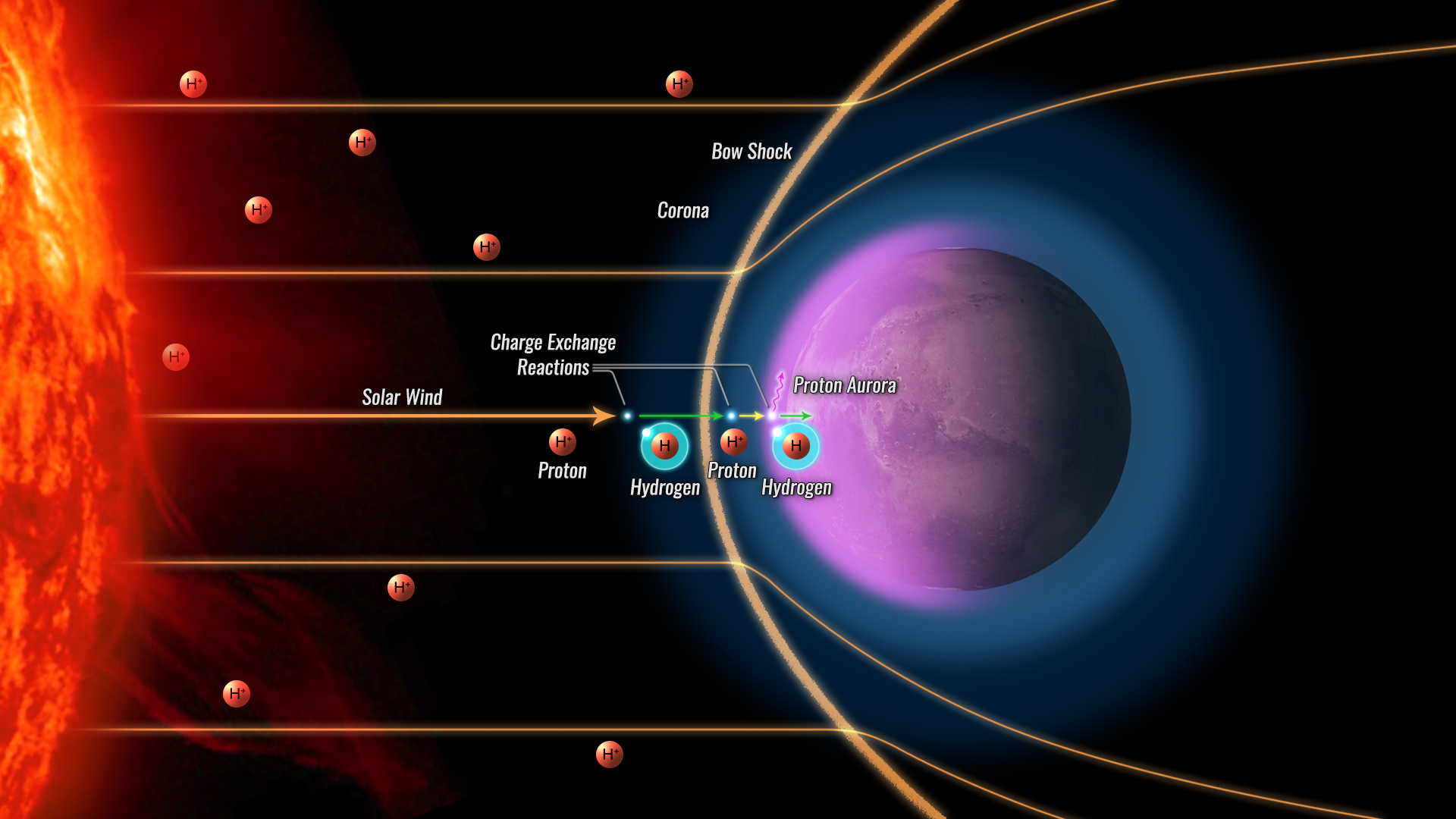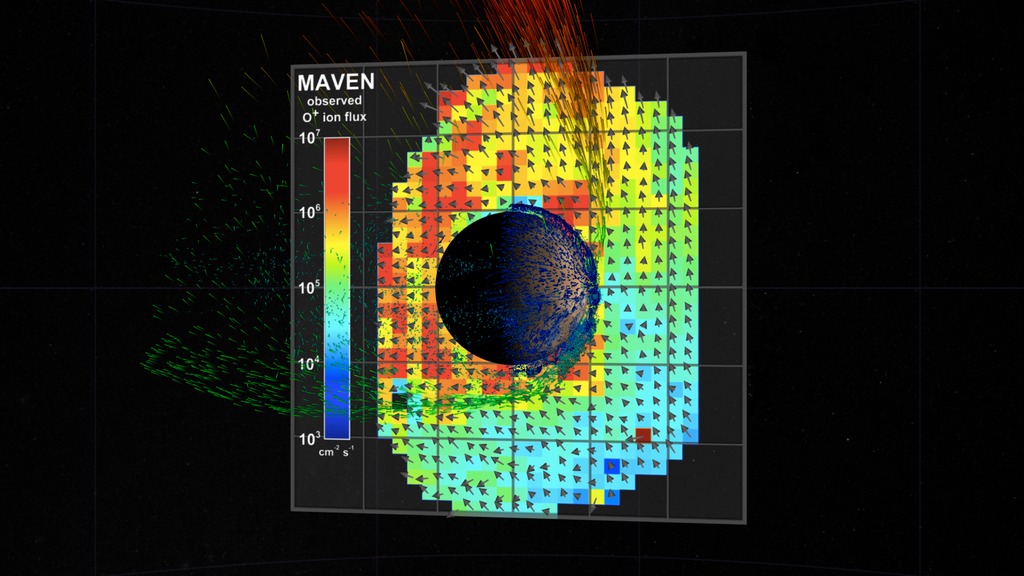Mars Patchy Proton Aurora
NASA’s MAVEN (Mars Atmosphere and Volatile Evolution) mission and the United Arab Emirates’ Emirates Mars Mission (EMM) have released joint observations of dynamic proton aurora events at Mars. Remote auroral observations by EMM paired with in-situ plasma observations made by MAVEN open new avenues for understanding the Martian atmosphere. This collaboration was made possible by recent data-sharing between the two missions and highlights the value of multi-point observations in space.

Comparison of normal and patchy proton aurora formation mechanisms at Mars.
Top image shows the normal proton aurora formation mechanism first discovered in 2018. White lines show that solar wind protons traveling away from the Sun are normally swept around the planet by the Mars magnetosphere, and don't directly interact with the atmosphere. When proton aurora occur, a small fraction of the solar wind collides with Mars hydrogen in the extended corona of the planet (shown in blue), and charge exchanges into neutral H atoms. These newly created H atoms are still travelling at the same speed, and are no longer sensitive to the magnetospheric forces that redirect protons around the planet. Instead, the energetic H atoms slam directly into the upper atmosphere of Mars and collide multiple times with the neutral atmosphere, resulting in auroral emission by the incident H atoms (purple). Because the solar wind and Mars corona are uniform across the planet, the aurora occurs everywhere on the planet's day side with a uniform brightness.
Bottom image shows the newly discovered formation mechanism for patchy proton aurora. Green lines in the top image show that under normal conditions the solar wind magnetic field drapes nicely around the planet. By contrast, patchy proton aurora form during unusual circumstances when the solar wind magnetic field is aligned with the proton flow. Under such conditions the typical draped magnetic field configuration is replaced by a highly variable patchwork of plasma structures, and the solar wind is able to directly impact the planet's upper atmosphere in specific locations that depend on the structure of the turbulence. When incoming solar wind protons collide with the neutral atmosphere, they can be neutralized and emit aurora in localized patches. During such times patchy proton aurora forms a map of the locations where solar wind plasma is directly impacting the planet.
Image Credit: Emirates Mars Mission/UAE Space Agency
For More Information
See NASA.gov
Credits
Please give credit for this item to:
Emirates Mars Mission/UAE Space Agency
-
Artist
- Andrew Dous (Freelance)
-
Scientist
- Michael Chaffin (University of Colorado Boulder)
-
Science writer
- Willow Reed (University of Colorado Boulder)
-
Public affairs officer
- Nancy Neal-Jones (NASA/GSFC)
-
Support
- William Steigerwald (NASA/GSFC)
- Dan Gallagher (KBR Wyle Services, LLC)
-
Technical support
- Aaron E. Lepsch (ADNET Systems, Inc.)
Release date
This page was originally published on Wednesday, August 31, 2022.
This page was last updated on Wednesday, May 3, 2023 at 11:44 AM EDT.

